
In the hustle and bustle of millennial life, finding time for hobbies and self-care can be a challenge. Gardening, often viewed as a time-consuming hobby, is a fantastic way to connect with nature and unwind, but many millennials shy away due to perceived high maintenance. However, with the right strategies, gardening can be a rewarding, low-maintenance activity perfectly suited to the busy lifestyles of today’s younger generation. Here, we explore 12 essential low-maintenance gardening tips that cater to the millennial’s schedule, ensuring a flourishing garden without the extensive time commitment.
1. Choose Low-Maintenance Plants
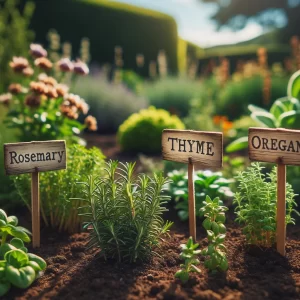
The foundation of a low-maintenance garden is selecting plants that require minimal care. Opt for native species, as they are adapted to your local climate and soil, reducing the need for watering and pest control. Succulents, perennials, and certain herbs are excellent choices for their resilience and minimal upkeep. These plants will not only thrive with less attention but also add vibrancy and diversity to your garden space.
2. Invest in Quality Soil

Starting with high-quality soil is a game-changer in low-maintenance gardening. Rich, nutrient-dense soil will support plant health, reducing the need for frequent fertilization. Consider adding compost to enhance soil fertility; this natural amendment supports plant growth and improves soil structure, leading to healthier plants that are more resistant to pests and diseases.
3. Utilize Mulch
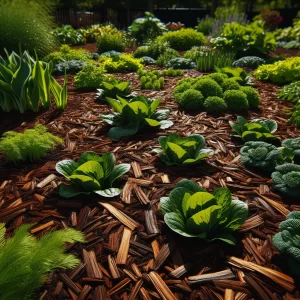
Mulch is a low-maintenance gardener’s best friend. It helps retain soil moisture – reducing the need for frequent watering – and suppresses weeds, minimizing the time spent on weeding. Organic mulches, such as bark or straw, also break down over time, adding nutrients back into the soil. This simple addition can save hours of maintenance over the course of a growing season.
4. Embrace Container Gardening

Container gardening is an ideal solution for millennials with limited space or time. Containers are versatile, allowing you to grow a variety of plants, including vegetables, herbs, and flowers, on patios, balconies, or indoors. They also provide better control over soil and watering conditions, making plant care more straightforward. Plus, containers can be moved to optimize light exposure or to add decorative touches to your living space.
5. Implement Drip Irrigation
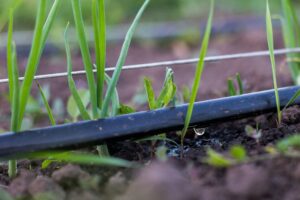
Installing a drip irrigation system is a time-saving investment for any garden. Drip irrigation delivers water directly to the base of each plant, reducing water waste and the time spent watering by hand. Many systems are adjustable and can be set on timers, ensuring your plants receive the right amount of water even when you’re away, making it perfect for the busy millennial lifestyle.
6. Choose Perennials Over Annuals

Perennials are plants that come back year after year, reducing the need for replanting each season. Investing in perennials means you’ll spend less time and money on new plants annually. These hardy varieties often have fewer demands and can provide consistent beauty and structure to your garden with minimal effort.
7. Practice Strategic Planting
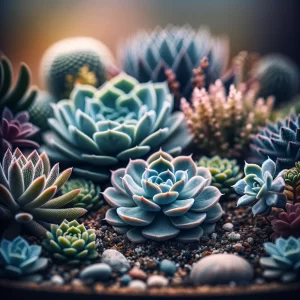
Plan your garden layout with maintenance in mind. Grouping plants with similar water and light requirements together simplifies care and reduces the risk of over or under-watering. This strategic planting also means you can create zones in your garden, each with its specific needs, making it easier to manage in the limited time you have.
8. Automate Your Garden Care
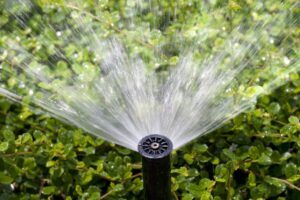
Technology can be a gardener’s ally, especially for those with tight schedules. Consider incorporating smart garden gadgets, such as programmable watering systems or soil moisture sensors. These devices take the guesswork out of garden maintenance and can be controlled via smartphone apps, aligning perfectly with the millennial penchant for technology and efficiency.
9. Emphasize Drought-Tolerant Plants

Drought-tolerant plants are perfect for the forgetful or busy gardener. These resilient plants require less watering and can survive periods of neglect without significant harm. Lavender, sedum, and ornamental grasses are excellent examples that add beauty and texture to your garden with minimal upkeep.
10. Reduce Lawn Space
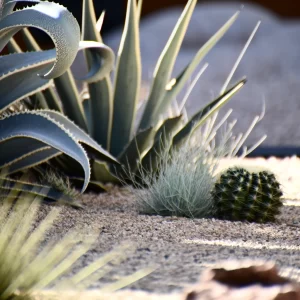
Lawns can be high maintenance, requiring regular mowing, watering, and fertilizing. Consider reducing your lawn area and replacing it with ground covers, gravel, or a patio. These alternatives provide attractive, functional spaces that require less regular maintenance, freeing up more time for you to enjoy your garden rather than labor over it.
11. Use Weed Control Fabric

Weeding is one of the most time-consuming garden tasks. To minimize this chore, lay down weed control fabric in your flower beds and cover it with mulch. This barrier prevents weeds from taking root and can significantly reduce the amount of time you spend weeding, making your garden more enjoyable and less of a burden.
12. Plan for All Seasons

A truly low-maintenance garden provides interest in every season without requiring constant changes and updates. When selecting plants, consider their growth cycles and when they will bloom or change color. Incorporate a mix of evergreens, late-blooming perennials, and plants with intriguing foliage or bark to ensure your garden remains vibrant and engaging throughout the year. This approach minimizes the need for seasonal replanting and ensures your garden remains a beautiful, low-maintenance retreat regardless of the season.
Embracing These Low-Maintenance Gardening Tips for Busy Millennials
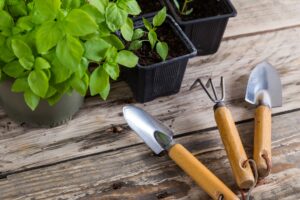
By integrating these 12 low-maintenance gardening tips, busy millennials can create and enjoy a beautiful garden that fits into their fast-paced lifestyle. Emphasizing simplicity, sustainability, and efficiency, these strategies are designed to maximize enjoyment while minimizing effort. Whether you’re an experienced gardener or a beginner, these tips can help you cultivate a peaceful, thriving garden space that complements your busy life, offering a serene escape without the high maintenance traditionally associated with gardening.
Read More:
12 Unexpected Health Benefits of Gardening That Go Beyond Fresh Produce
Eco-Friendly and Economical: 10 Sustainable Gardening Hacks
Catherine is a tech-savvy writer who has focused on the personal finance space for more than eight years. She has a Bachelor’s in Information Technology and enjoys showcasing how tech can simplify everyday personal finance tasks like budgeting, spending tracking, and planning for the future. Additionally, she’s explored the ins and outs of the world of side hustles and loves to share what she’s learned along the way. When she’s not working, you can find her relaxing at home in the Pacific Northwest with her two cats or enjoying a cup of coffee at her neighborhood cafe.
Leave a Reply